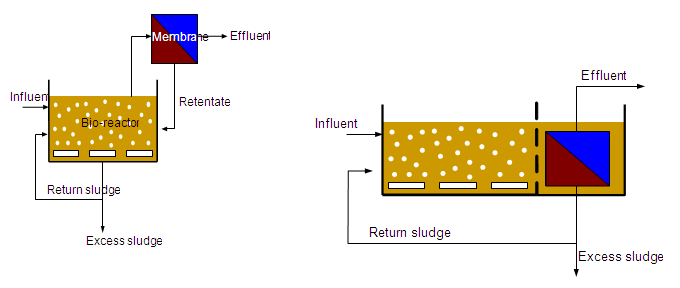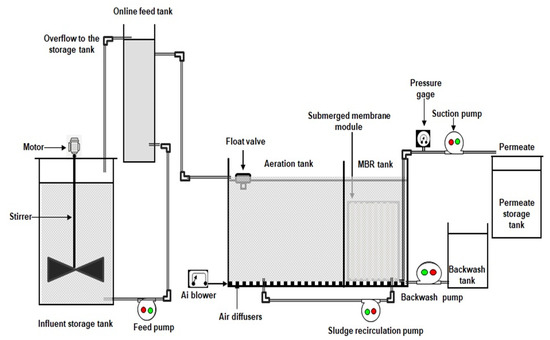How Membrane Layer Bioreactors Are Transforming Water Purification Equipments
The introduction of membrane bioreactors (MBRs) stands for a significant innovation in the area of water filtration, combining organic treatment processes with sophisticated membrane layer filtration technologies. This integration not just boosts the top quality of dealt with effluent yet also addresses city room restrictions, making MBRs particularly appropriate for densely inhabited locations. As international water deficiency increases, the duty of MBRs in helping with safe and clean water reuse and sustainable water management ends up being increasingly essential. Yet, the ramifications of this modern technology expand past effectiveness-- what opportunities and challenges exist ahead for its widespread implementation?
Overview of Membrane Layer Bioreactors
Membrane bioreactors (MBRs) represent a substantial improvement in water purification modern technology, as they combine biological therapy processes with membrane layer filtration. This integration boosts the performance of wastewater treatment by utilizing microorganisms to degrade natural toxins while at the same time employing semi-permeable membrane layers to different treated water from suspended solids and virus.
The MBR system commonly contains an organic reactor where the microbial population metabolizes impurities, complied with by a membrane filtering system that preserves biomass and permits just tidy water to go through. This twin performance results in greater effluent quality compared to standard treatment techniques. MBRs can be operated in both batch and continuous circulation modes, supplying versatility in design and application.
In Addition, MBRs are identified by their compact impact, making them ideal for urban settings with room restrictions. Membrane Bioreactor. They likewise enable the healing of water for reuse, thus adding to water sustainability initiatives. While MBR technology has actually gained popularity in local and industrial applications, its operational complexities and power demands demand cautious factor to consider throughout implementation. Generally, MBRs go to the leading edge of improving water therapy efficiency and quality, showcasing the capacity for ingenious solutions in ecological management.
Benefits of MBR Technology
The combination of organic treatment with membrane filtration offers various benefits for water purification processes. Among the main benefits of Membrane layer Bioreactor (MBR) technology is its capability to properly eliminate both organic and not natural impurities, resulting in top quality effluent. The membrane layers serve as a physical obstacle, protecting against suspended solids and microorganisms from going through, which improves the total safety and security and dependability of treated water.
In addition, MBR systems require a smaller impact contrasted to conventional treatment techniques, allowing for more effective room application. This portable layout is particularly beneficial in metropolitan setups where land is limited. MBRs likewise demonstrate functional flexibility, suiting differing influent high qualities and flow rates without significant efficiency deterioration.
Furthermore, the process uses improved nutrient elimination abilities, particularly for nitrogen and phosphorus, which are essential for protecting against eutrophication in getting waters. The reduced sludge manufacturing linked with MBR technology also equates to reduce disposal prices, making it an economical option in the lengthy run - Membrane Bioreactor. On the whole, the benefits of MBR innovation position it as a leading selection for cutting-edge and sustainable water purification systems, dealing with both ecological and financial problems
Applications in Water Purification
Applications of Membrane Bioreactor (MBR) modern technology in water filtration are varied and impactful, resolving different treatment requires across multiple fields. MBRs successfully integrate biological treatment procedures with membrane filtering, making them excellent for local wastewater treatment, industrial effluent management, and also potable water reuse campaigns.
In community settings, MBRs are increasingly utilized to boost the top quality of treated wastewater, enabling for conformity with rigorous discharge laws and promoting the recycling of water for irrigation and non-potable usages. Their portable layout likewise makes them appropriate for metropolitan settings where space is restricted.
Industrially, MBR innovation is used to treat process water and wastewater, specifically in sectors such as food and drink, pharmaceuticals, and fabrics. By efficiently getting rid of impurities and put on hold solids, MBRs assist industries reduce browse around this site environmental effects while recouping valuable sources from wastewater streams.
Additionally, MBRs are gaining traction in decentralized water therapy applications, where small-scale systems can be released in remote areas or establishing regions. This versatility makes it possible for areas to achieve lasting water monitoring services, enhancing access to clean water while minimizing dependence on standard therapy techniques.
Instance Researches and Success Stories

In another example, a fabric manufacturing center in Bangladesh embraced MBR modern technology to address its wastewater obstacles. The system reduced chemical oxygen demand (COD) degrees from 1,200 mg/L to much less than 100 mg/L, hence fulfilling regulative standards and substantially lessening environmental effect.
The College of Cape Town's MBR installation has confirmed effective in treating greywater for non-potable reuse on university. This job not just conserves safe and clean water but likewise functions as an instructional version for lasting methods.
Additionally, a fish and shellfish handling plant in Norway utilized MBR modern technology to treat effluents including high degrees of organic matter, accomplishing over 90% pollutant elimination. These study underscore MBR modern technology's versatility and its vital duty in improving water top quality across varied applications.
Future of Water Treatment Solutions
As global water deficiency and contamination obstacles magnify, innovative water therapy solutions are ending up this content being significantly important to make sure lasting accessibility to clean water. The future of water therapy depends on the integration of advanced technologies that enhance the efficiency and effectiveness of filtration processes. Membrane layer bioreactors (MBRs) are at the leading edge of this advancement, incorporating organic treatment with membrane filtration to generate premium effluent suitable for different applications.

Emerging fads such as source recuperation from wastewater, including nutrients and energy, will certainly even more transform treatment centers right into eco-friendly hubs. In addition, innovations in nanotechnology and membrane layer materials assure boosted efficiency and longevity of purification systems.

Conclusion
Finally, membrane bioreactors represent a considerable advancement in water purification modern technologies, successfully combining organic therapy with innovative membrane purification. The countless advantages, consisting of improved effluent high quality and lowered spatial requirements, make MBRs especially ideal for city applications. Their role in potable water reuse and lasting water monitoring highlights their relevance in resolving worldwide water deficiency challenges. Proceeded r & d will certainly further enhance the effectiveness and adoption of MBR innovation, ensuring a resistant future for water treatment services.
The emergence of membrane bioreactors (MBRs) stands for a significant development in the field of water purification, combining biological treatment procedures with cutting-edge membrane filtration modern technologies. As international water scarcity increases, the role of MBRs in helping with potable water reuse and sustainable water administration ends up being progressively crucial. They likewise make it possible for the healing of water for reuse, therefore contributing to water sustainability efforts.As worldwide water shortage and air pollution challenges heighten, innovative water therapy remedies are coming to be progressively essential to guarantee lasting access to tidy water. Their role in potable water reuse and sustainable water administration highlights their value in dealing with worldwide water shortage site difficulties.